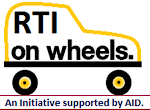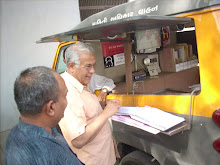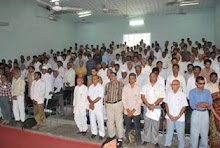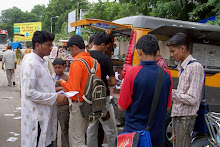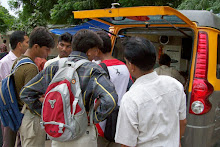Indian Express: Amritsar: Monday, December 28, 2015.
Two days
after the 23-year-old was hit on his eye and face by pellets fired allegedly by
J&K police to disperse a protest in Srinagar’s old city last month, he took
a bus with his father to Amritsar for treatment.
It’s not that
there were no facilities for treatment in the Valley, but his father said: “I
don’t want my son’s life to be ruined. Back home, policemen track these boys
even in hospitals. We came to know that Amritsar is the best place for this
treatment.”
The
23-year-old and his father did not wish to be identified but doctors in
Chandigarh and Amritsar, both just an overnight journey away from the Valley,
say they have been treating more patients from Kashmir, of late, who come to
them with similar injuries and similar stories.
While the
23-year-old received treatment at the Sardar Bahadur Dr Sohan Singh Eye
Hospital, the Post Graduate Institute of Medical Education and Research
(PGIMER) in Chandigarh has also recorded such cases from the Valley.
When
contacted, IGP (Kashmir) Syed Mujtaba Gillani denied that pellet victims are
“harassed” by police. “This is not true. They go out for treatment because
there are no specialised options in Kashmir. In many cases, it is the police
which has facilitated such travel outside the state,” Gillani told The Indian
Express.
However, Dr
Sajad Khanday, consultant ophthalmologist at Srinagar’s state-run Shri Maharaja
Hari Singh (SMHS) Hospital, told The Indian Express that those who suffer
pellet injuries “prefer to go outside for treatment for non-medical reasons”.
“We have the
best facilities available in Kashmir to treat these patients. But they prefer
to go outside because apparently they have apprehensions of getting booked or being
chased by security agencies,” said Dr Khanday.
Management at
the Dr Sohan Singh hospital in Amritsar said that on an average, the hospital
receives two-three patients with pellet injuries from Kashmir every month. “I
have conducted as many as 25 surgeries of pellet cases this year,” said Dr
Vipan Kumar Vig, from the hospital.
Doctors at
the Dr Om Prakash Eye Institute in Amritsar said they receive at least one
pellet-injury case every month from the Valley. “The situation is severe when
they come here,” said Dr Mohit Gupta, from the institute.
Asked to
elaborate on the injuries, a doctor from Dr Sohan Singh hospital said, “Pellet
victims mostly have vitreous haemorrhage, retinal detachment or damage to the
cornea. When they come here, they have only a perception of light and have to
undergo multiple surgeries.”
The doctors
also described most of the patients who arrive in Amritsar and Chandigarh as
“from poor backgrounds” who struggle to pay the bill that usually comes to
“around Rs 30,000”.
“We give some
of them concessions, as well,” said Dr Vig. Mahinder Pal, the administrator at
Dr Sohan Singh hospital, said that he once treated a pellet-injury patient who
had just Rs 2,000 with him. “In some cases, patients don’t have enough money
and request doctors to delay the payment. They pay some money during their
first visit, and pay the rest later,” said Pal.
The J&K
police, which have been using pellet guns since the massive protests of 2010,
have described them as “non-lethal” weapons used to break up protests. “One
cartridge in a pellet gun contains a few hundred pellets,” said a police
officer from J&K.
But doctors
in Chandigarh and Amritsar said that in their experience, at least 70 per cent
of those hit on the eye by the small, metal pellets lose their sight, at least
partially. “If the eye is hit by the pellet directly, there is no chance of
saving it,” said Dr Daljit Singh, a prominent eye specialist in Amritsar who
has treated pellet victims from Kashmir.
In 2014, a
study by doctors at Srinagar’s SMHS hospital concluded that pellet-related
ocular injuries are becoming increasingly common in Kashmir. “In severely
injured eyes, the visual prognosis remained poor despite adequate treatment,”
the study stated.
According to
an RTI application filed in 2013, around 200 patients were admitted to
hospitals in Srinagar for pellet injuries between 2010-2013.
Adding to the
growing belief among doctors in Amritsar and Chandigarh that the victims seek
treatment without the knowledge of police in J&K is that “many of them are
unable to furnish discharge certificates from where they claim to have received
first-aid in the Valley”.
“We have
noticed that most of them left hospitals in Kashmir without informing the
administration, because they don’t carry the discharge certificates with them,”
said a doctor at Dr Sohan Singh hospital.
In Srinagar,
too, doctors claim that pellet-injury victims often provide fake names while
getting admitted and leave against the medical advice. “It becomes impossible
for us to trace them,” said a doctor at SMHS.




